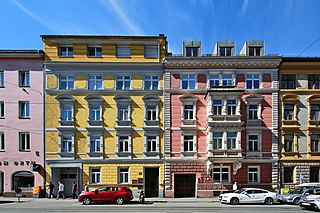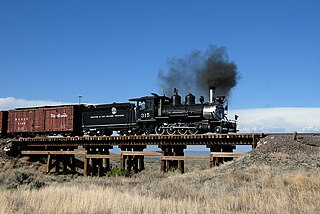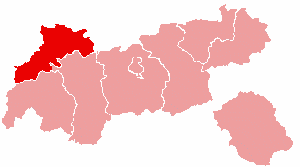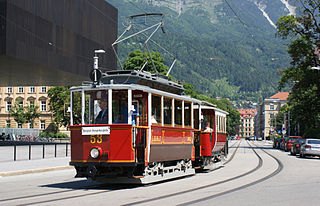History
When, in 1983, it finally became clear that the 79-year-old railbuses on the Stubai Valley Railway ( Stubaitalbahn ) were to be withdrawn from service, the Tiroler MuseumsBahnen Society was founded in May of that same year "with the aim of preserving these historically important vehicles for posterity." Although initially the prospect of acquiring suitable premises for the society did not look good, thanks to political supporters, including the then mayor, Nischer, the former locomotive depot and part of the Stubaital station (waiting room and movements office) were able to be acquired and the Localbahn Museum was opened as early as summer 1985. In order to create space for more vehicles, the majority of the trailer cars from the Stubai Valley Railway were sold or rented. For example, an Igler driving trailer, several Igler trailer cars and some goods wagons from the Stubai Valley Railway were added to the collection. In 1989 the first vehicle - goods wagon 32 from the Stubai Valley Railway - was restored to its original state. By the beginning of 2009 another 16 vehicles - some in their original delivery condition - were made operational. In 1991 they celebrated the centenary of the Innsbruck Tramway with the Innsbruck transport companies. Around the turn of the millennium the locomotive shed, which dates to 1903 and had by then become dilapidated, was given a major overhaul. In 2000 they celebrated the centenary of the Innsbruck Mountain Railway was commemorated in Innsbruck and the surrounding area and, in 2004, it was followed by centenary celebrations for the Stubai Valley Railway. In October 2008 the museum railway company itself celebrated its 25th anniversary with the active participation of politicians from the state of Tyrol and the city of Innsbruck.

Innsbruck is the capital of Tyrol and the fifth-largest city in Austria. On the River Inn, at its junction with the Wipp Valley, which provides access to the Brenner Pass 30 km (19 mi) to the south, it had a population of 132,493 in 2018.

Conservation and restoration of rail vehicles aims to preserve historic rail vehicles.

Landeck is a city in the Austrian state of Tyrol, the capital of the district of Landeck.

The Stuttgart Rack Railway is an electric rack railway in Stuttgart, Germany. It is the only urban rack railway in Germany, and one of only four rack railways operating in Germany, along with the Bavarian Zugspitze Railway, the Drachenfels Railway and the Wendelstein Railway.

The Stubaitalbahn is an 18.2 km (11.31 mi) long narrow gauge interurban tram from Innsbruck to Fulpmes in Tyrol, Austria. In the city of Innsbruck, it uses the local tramway tracks. At the Stubaital station, the branch line-rated part begins. The meter gauge track starts at Innsbruck's Main station, crosses the Wilten district, and passes the villages of Natters, Mutters, Kreith, and Telfes. Between the Stubaital station and Fulpmes, the railway is single-track, but at nine stations: Sonnenburgerhof, Hölltal, Mutters, Nockhofweg Muttereralmbahn, Feldeler, Kreith, Telfer Wiesen, Luimes, Telfes, there are passing loops where the train usually uses the left-hand track. The final station, Fulpmes, has three tracks and one depot.

The Ritten Railway is an electric light railway which originally connected Bolzano with the Ritten plateau and today continues to operate on the plateau, connecting the villages located there.

Lake Achen is a lake in Austria, north of Jenbach in Tyrol. Lake Achen is also called "Fjord of the Alps" and "Tyrolean Sea". The largest lake within the federal state, its maximum depth is 133 metres (436 ft). Together with the Achen Valley, it parts the Karwendel mountain range in the west from the Brandenberg Alps in the east.

Innsbruck Hauptbahnhof is the main railway station in Innsbruck, the capital city of the Austrian federal state of Tyrol. Opened in 1853, the station is a major hub for western and central Austria. In 2019, it was the 8th-busiest station in the country, and the 2nd-busiest outside of Vienna after only Linz Hauptbahnhof, with 315 train movements and 38,500 passengers daily.

The Tyrolean Zugspitze Cable Car was the first wire ropeway to open the summit of the Zugspitze, Germany's highest mountain on the border of Austria. Designed and built by Adolf Bleichert & Co. of Leipzig, Germany, the system was a record-holder for the highest altitude.

The Leipzig tramway network is a network of tramways which together with the S-Bahn Mitteldeutschland forms the backbone of the public transport system in Leipzig, a city in the federal state of Saxony, Germany. Opened in 1872, the network has been operated since 1938 by Leipziger Verkehrsbetriebe (LVB), and is integrated in the Mitteldeutscher Verkehrsverbund (MDV).

Stubaital station was built in 1903 and, until 1983, was the terminus of the Stubai Valley Railway in Innsbruck. Since 1983 trains approaching from Fulpmes have been routed through the city of Innsbruck.

Tyrol is a historical region in the Alps of Northern Italy and western Austria. The area was historically the core of the County of Tyrol, part of the Holy Roman Empire, Austrian Empire and Austria-Hungary, from its formation in the 12th century until 1919. In 1919, following World War I and the dissolution of Austria-Hungary, it was divided into two modern administrative parts through the Treaty of Saint-Germain-en-Laye:

Außerfern refers to the district of Reutte in the Austrian federal state of Tyrol.

The Mittenwald Railway, popularly known as the Karwendelbahn, is a railway line in the Alps in Austria and Germany. It connects Innsbruck via Seefeld and Mittenwald to Garmisch-Partenkirchen.

The first railway in Austria was the narrow-gauge line from Gmunden in the Salzkammergut to Budweis, now in the Czech Republic, this was 1,106 mm gauge. Some two dozen lines were built in 760 mm gauge, a few in 1,000 mmmetre gauge gauge. The first was the Steyrtalbahn. Others were built by provincial governments, some lines are still in common carrier use and a number of others are preservation projects. The tramway network in Innsbruck is also metre gauge; in Linz the rather unusual gauge of 900 mm is in use.

Philipp Sarlay, also named Filipp Sarlay was an Austrian principal of telegraph office of Austrian-Hungarian origin and a pioneer in technological and scientific accomplishments. He was a follower of naturopathy, abstainer and vegetarian. Furthermore, he was occupied by studying mathematical phenomena

The Innsbruck tram network is currently organised over six routes and has a total length of 44 kilometres (27 mi).

The Tirol Panorama with the Museum of the Imperial Infantry or Tirol Panorama is a museum in Innsbruck in the Austrian state of Tyrol, which is mainly important because it houses the Innsbruck Giant Panorama Painting.
The Andreas Hofer Kreuzer, also called the Hofer Kreuzer or Sandwirtszwanziger, was the name of the 20- and 1-kreuzer coins that were minted during the Tyrolean Rebellion in Hall in Tirol in 1809. The obverse depicts the Tyrolean Eagle and the inscription Gefürstete Grafschaft Tirol; the reverse shows the nominal value.






















